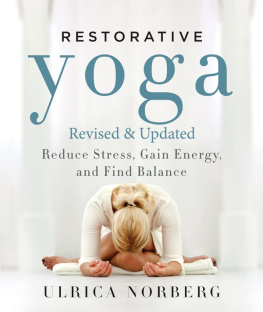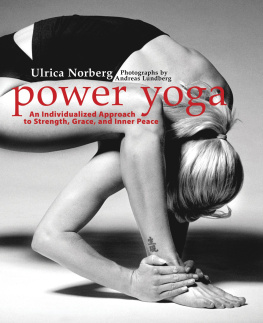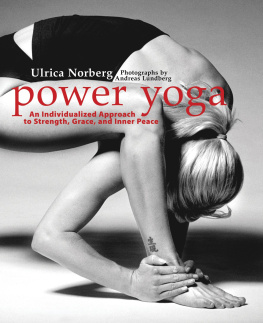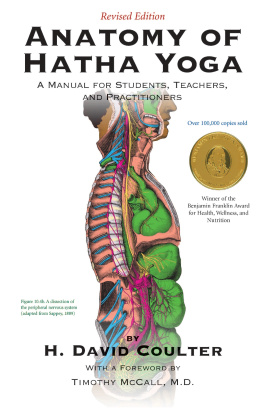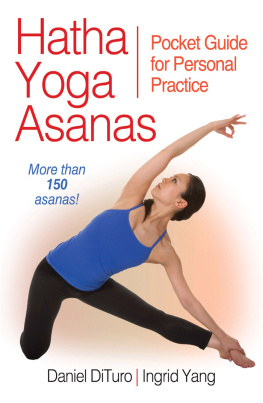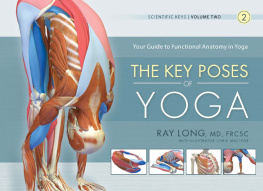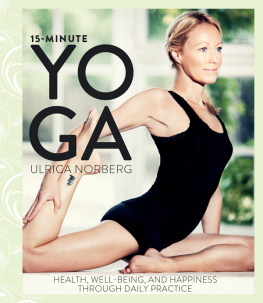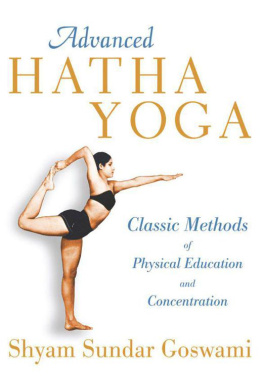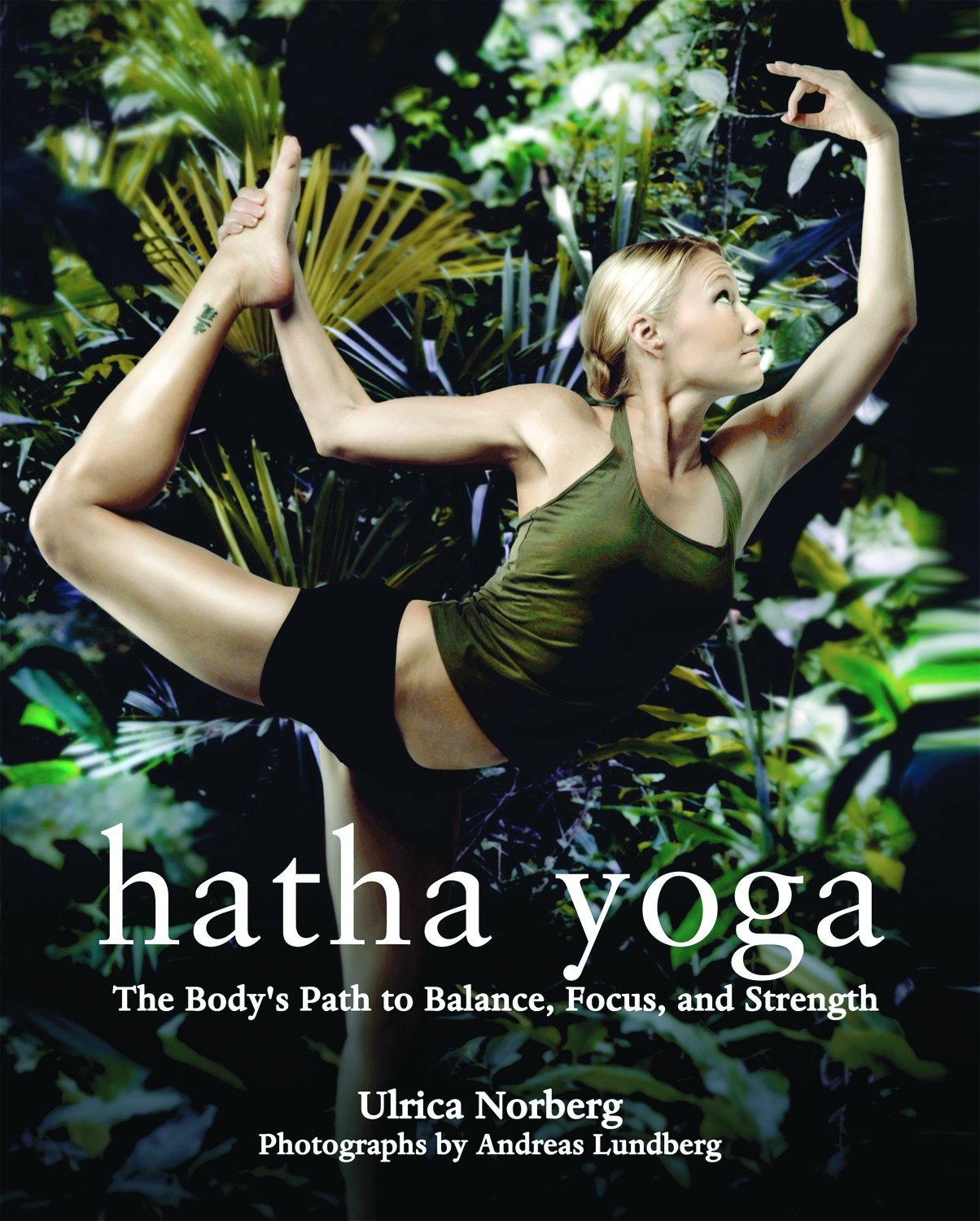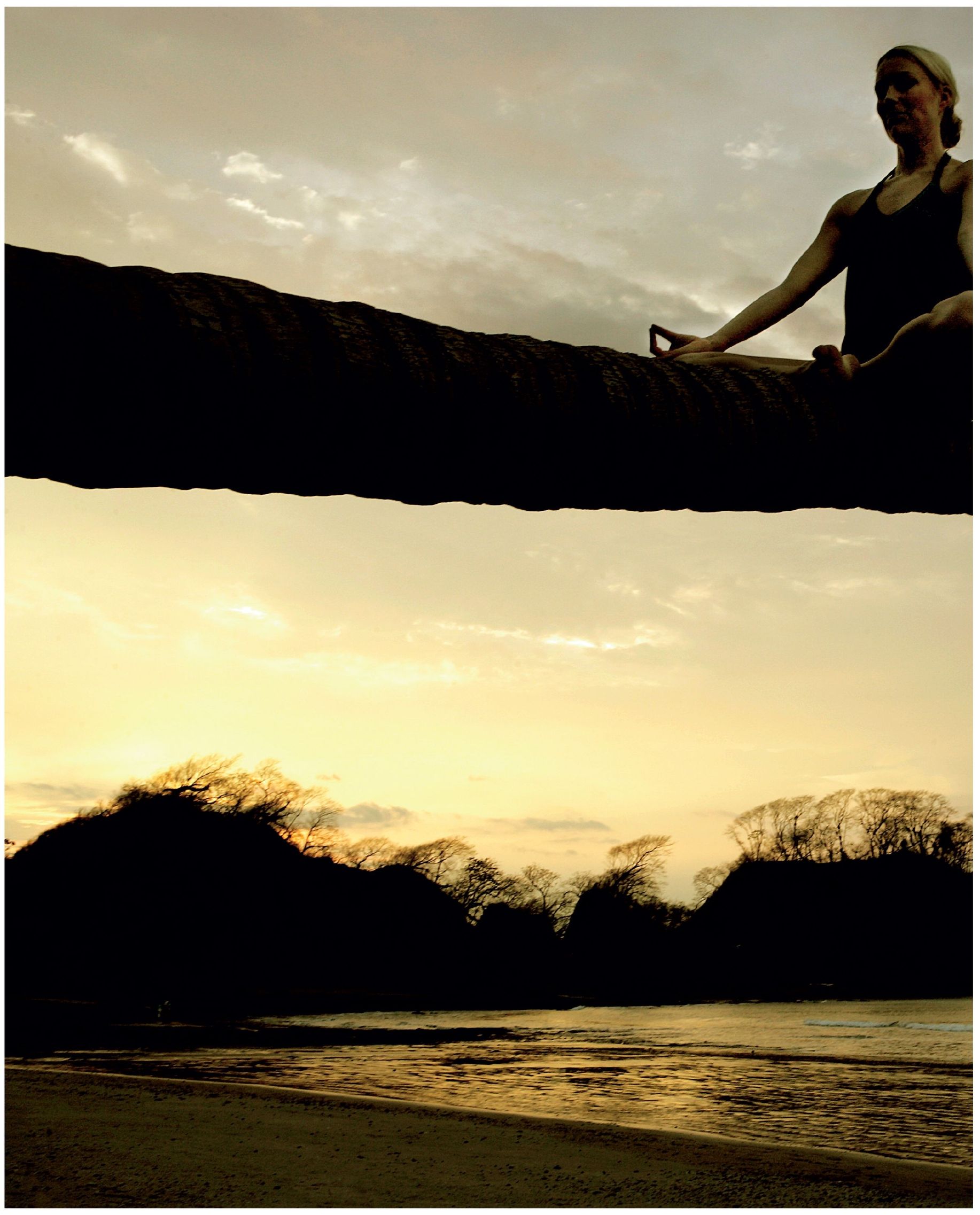Afterword
Asanas and pranayama, along with bandhas, drishti, and mudra, create a training that sharpens the senses. Often Hatha Yoga is defined as meditation in motion and this means that before the mind can be really strong and balanced, we have to help it find a safe home to live inour body. When we have form, body, and mind as one we can see our contents, our soul. It is then that our true spirit is ready to make itself known to us; kundalini (life force). The three development phasesbody, mind, and spiritual developmentrepresent the path to yoga. By incorporating awareness into everything we do, our consciousness transforms to wisdom and we develop Bhumi , understanding of who we are, why we are, and what we are.
Yoga doesnt make demands based on achievement, perfection, or results. Instead you can be who you are, reveal what you want of yourself, have a great time, and work at your own pace. Yoga gives us power to keep going with less unnecessary strain (also without getting lazy or slow) and even perhaps achieve better results, free from blockages, obstacles, uncertainty, and stress. As a bonus we get the physical benefits, such as muscle development, increased flexibility, better balance, blood circulation, and oxygenation, as well as a balanced metabolism. Our individual requirements play into how each one of us develops. A good piece of advice is to try to avoid results, just do the practice; just do it and keep doing it and see what happens. Youll be undoubtedly and positively surprised.
For me yoga is a great path to self-improvement. These methods have taught me and still teach me to stay present to life and in everything I take on. Even if I practice and teach in more than one yoga form (even Ashtanga Vinyasa Yoga and Power Yoga) it is still classic Hatha Yoga that I consider to be my main branch of practice, as it was here I started my yoga journey. One feeling that grows stronger with each passing day is that I will never give up classic Hatha Yoga, as I can grow old together with itit gives me more depth and breadth in its dimensions than its branches do.
To write a book about Hatha Yoga is no easy task, as the yogic path to balance has so very many dimensions, structures, and profundities. One can easily become over-ambitious. So we have strived to find a simple structure for the contents, so that they may work as both inspiration and education for you as the reader. Perhaps you actually are enticed into wanting to learn more about Hatha Yoga and yoga in general. Regardless what significance you ascribe to what you have read, I want to wish you the best of luck on your path through life.
And now I want to thank the following people:
My husband, daughter, and family for their love, encouragement, and support. A big thanks as well to Alexandra and Andreas for the time you took to so delicately nuance my words and vision with the book.
I would also like to send a big thanks to Sara Granstrm, Catarina Falklind-Breschi, Carola Solem, Carina Schutt, Sarah Jonsson, Jan Altersten, Eva Bratt, and all of my teachers and students, as well as all of those who work in the studios where I have taught and now teach.
Om Sri Guru Bhyoh Namaha ,
references
Anodea, Judith. Eastern Body, Western Mind . Celestial Arts. Berkeley (California, USA), 1996
Coulter, David H. Anatomy of Hatha Yoga : A Manual for Students, Teachers and Practitioners Bodyandbreathbooks, 2003
Desikachar, T.K.V. & Cravens R.H. Health Healing and Beyond: Yoga & The Living Tradition of Krishnamacharya . Aperture Foundation, 1998
Desikachar, T.K.V. The Heart of Yoga: Developing a Personal Practice . Inner Traditions International. Rochester, Vermont, 1995
Feuerstein, Georg & Miller, Jeanine. The Essence of Yoga . Inner Traditions. USA, 1998
Iyengar, B.D.S. Light on Yoga. Thorsons Aquarian Press, 1991. First published by George Allen & Unwin. Ltd., 1966, 1968, and 1976
Johari, Harish. Chakras, Energy Centers of Transformation . Destinys Books. USA, 1987
Jois, Sri K. Pattabhi. Yoga Mala . Patanjali Yoga Shala. New York, 1999 Lalvani, Vimla. Classic Yoga . Hamlyn Publishing, London, 1996
Prana Pranayama Prana Vidya . Yoga Publications Trust (Bihar School of Yoga), 2002
Saraswati, Satyananda Swami. Asana Pranayama Mudra Bandha , Yoga Publications Trust (Bihar School of Yoga), 1969
Satchidananda, Sri Swami. The Living Gita: The Complete Bhagavad GitaA Commentary for Modern Readers. Henry Holt and Co., Inc., 1990
Satchinananda, Sri Swami. Yoga Sutras of Pantanjali . Inner Traditions International. Vermont, USA, 1989
Smith, Houston. The Illustrated Worlds Religions: A Guide to Our Wisdom Traditions . Harpers. San Francisco, 1991
Svatmarama, Swami. Hathayoga Pradipika . Commentary by Hans Ulrich Reiker. Aquarian Press, 1992
Usharbudh, Arya. Philosophy of Hatha Yoga . Himalayan Inst Pr, 1985
hatha yoga
Neither through action or by abstinence from action does one achieve peace; nor by renunciation alone can one attain perfection.
Bhagavad Gita (3.5)
To clarify what yoga really is, we can start with looking at what it isnt .
Yoga isnt a religion, cult, or New Age fad. Its not a modern fitness regime that takes a little here and a little there from Asian or Indian training systems. Yoga isnt a lifestyle choice with some predetermined number of values which must be adhered to. You dont need to light incense or wear spiritual necklaces to practice yoga. You dont need to believe in any god or live a religious life. Yoga doesnt require any blind faith, specific prerequisites, or knowledge. There also arent any requirements for penance or confession, humiliation, or self-denial. You dont have to give up any specific food, alcohol, sex, or money. You dont have to be nimble, young, rich, skinny, beautiful, or trendy. You only have to be yourself, just as you are. The only things yoga recommends are moderation, openness, and regular reflection about what is happening inside you.
The word yoga has a broad meaning. The basic definition is yoke, join, unify in Sanskrit. Yoga is about joining together two dimensions; humanity (brahman) and an individuals true self (atman) to find balance between the two.
Yogas historical background
Yoga is one of six schools of thought that together are called Darsana (the way to see). These can be seen as different perspectives on how life, living, and energy work together in different ways in time and space as well as outside and inside every living thing. That which distinguishes yoga from the other schools of thought is that it deals entirely with human potential. Yoga highlights and even describes the methods that can increase life force and harmonious development in life. All the techniques deal with insights and wisdom about humans and their nature.


